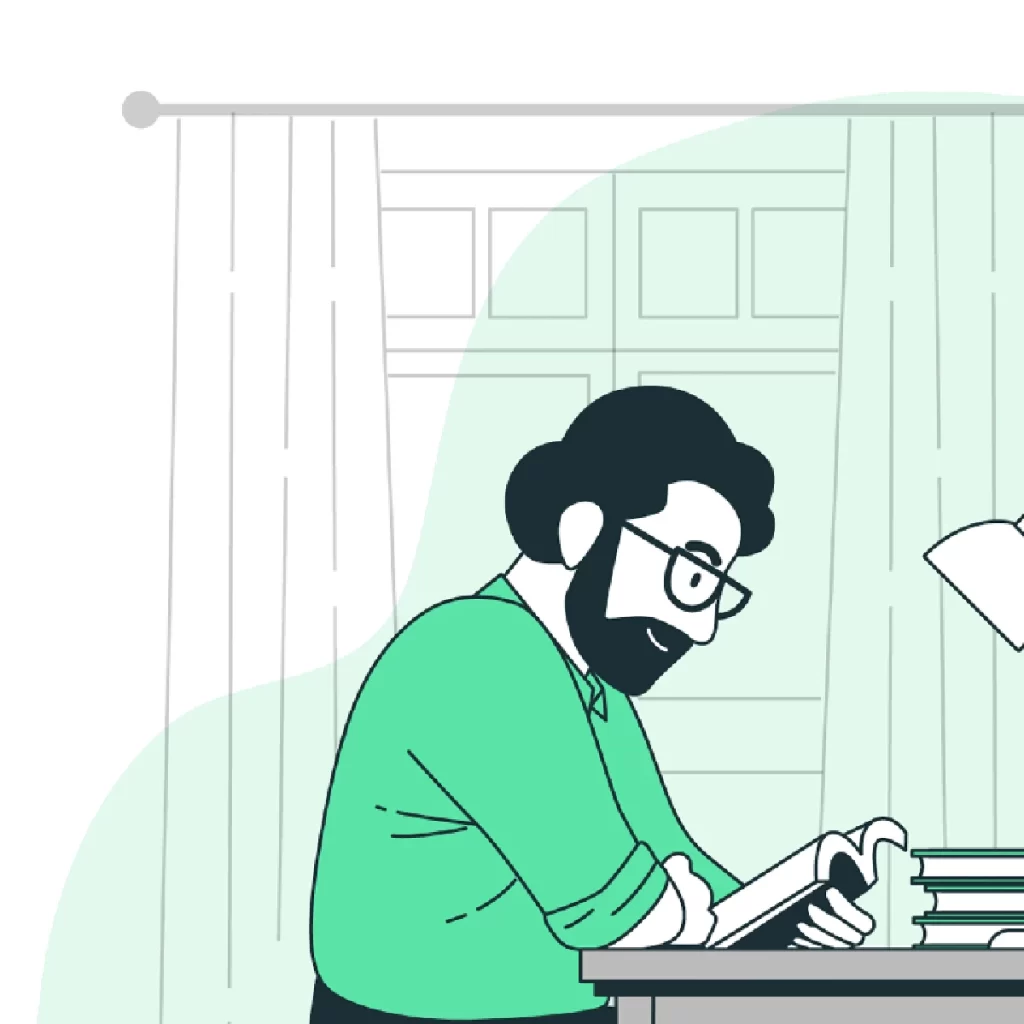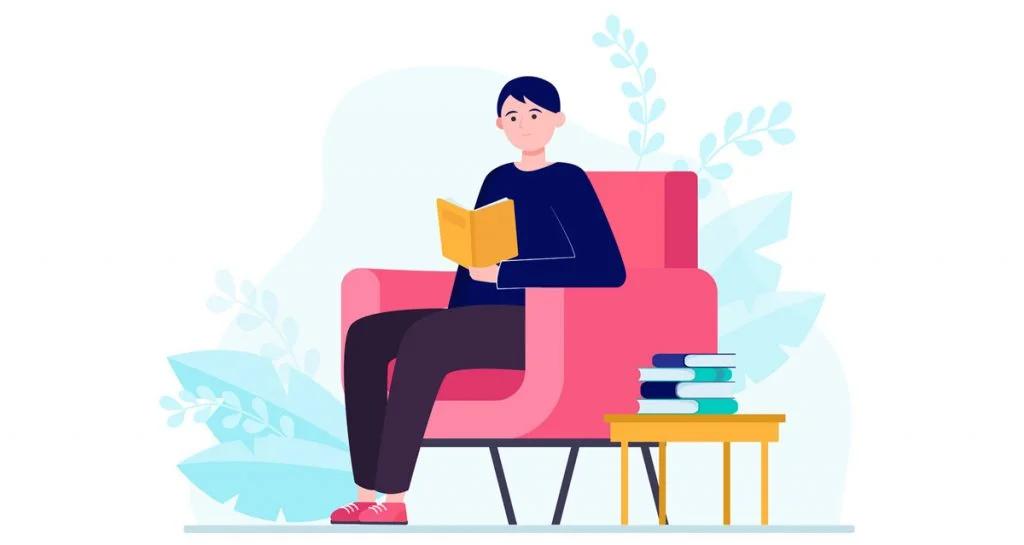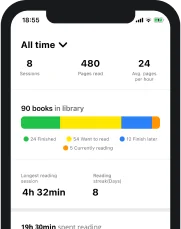While most of the time we think of reading as a relaxing and entertaining activity, there are times when it can be a quite challenging one. The complexity of the reading material, our state of mind, and the purpose of our reading session can all influence how smooth this activity is and how much we enjoy it.
Learning how to read difficult texts can not only help you enjoy more pleasurable reading sessions regardless of the complexity of the material but can also open new doors in terms of what you are able to learn through reading.
Here at Basmo, we believe that nothing should stand in your way when it comes to reading and that is why we dedicated time and effort to approaching one of the most challenging subjects on this topic: reading difficult texts.
What makes a text difficult to read?
A difficult text can be defined in several possible ways. On one hand, you might consider a difficult reading material – one that contains many words that are unfamiliar. The number of words you know or don’t know the meaning of in a text you’re reading can influence a series of things, including your reading speed, the level of comprehension you manage to reach, and how tiring the session is going to be.
Similarly, texts about hard-to-grasp concepts can be considered difficult reading as well. Even though the concepts can be explained in words you know and easily understand in other contexts, if the topic of the text is a particularly complex one, you might find it extremely hard to read. For example, regardless of the vocabulary used, topics like machine learning, philosophy, the theory of relativity, or quantum computing are quite difficult to understand.
As a general rule, regardless of what makes the process too complex, reading difficult books has a couple of key elements that define it: a considerably slower-than-usual reading speed, low levels of comprehension, and low information retention.
How to read difficult texts? Our step-by-step guide to reading difficult texts
Learning how to read a difficult text is a relatively simple task if you approach it with the proper dedication, a good mindset, and the appropriate tools. Following a list of steps can give the whole process a new perspective and can add to its efficiency in the end.
Here are the steps you should follow every time you are faced with some difficult reading.
1. Establish your goal
Approaching a difficult task in general without the proper motivation or a clear goal is a mistake. Reading difficult texts is no different. In order for your reading session to truly be a successful one, you need to know why you are trying to tackle this assignment. What are you hoping to achieve by reading this particular text? How do you think it will influence you and what is your ultimate goal?
Knowing the answers to these questions is going to give you a motivation boost and will help you find the energy to push through even when things are truly difficult. Going into a difficult reading session with no clear goals or no purpose is unlikely to end well.
2. Remove distractions
One thing about difficult reading that you should always keep in mind is that it requires some special conditions. You need as much brain power available as possible, which means you cannot afford to let your mind wander or be distracted while reading a difficult text. To do this, you should make sure you have optimal conditions.
Remove all possible distractions: turn off the TV and any music (unless you’re listening to chill, instrumental music designed to help with focus), turn off the notifications on your phone, and make sure people in your household have received proper instructions not to disturb you.
3. Preview the reading material
Once you’re sure that you have the best possible conditions for your upcoming reading session, the next thing you should do is preview the material you are about to read. Skim it quickly, try to identify a couple of general ideas from it, check some of the concepts you are going to be reading about, and quickly scan the text to gain a general understanding of the way it is organized.
That way you will familiarize yourself a little with the format and layout. This will help you locate the important sections more easily so that you always know exactly the parts of the book where the most relevant information is located. You will have an easier time navigating the text, which will take some of the pressure off your reading session.
4. Be mindful
Mindfulness is an amazing tool. To put it in layman’s terms, mindfulness means always living in the moment, focusing on the present, and fully experiencing it down to the last detail. This state of awareness, when properly mastered, can be an amazingly efficient tool when it comes to focus and concentration.
In other words, being mindful about reading difficult texts means focusing all your attention and energy on the task at hand. It’s just you and the text you are reading, nothing else exists around you but the book and the words on the pages. Granted, this can be somewhat exhausting, but it is definitely an improvement over allowing yourself to get distracted and having to re-read every paragraph to ensure that you understand it.
5. Read in small, manageable chunks
Difficult texts should always be read in small increments. Don’t expect to manage to read huge amounts of complicated content in a single sitting because you are going to be greatly disappointed.
Unrealistic expectations are, as you can imagine, extremely counterproductive. Not only that, but expecting or even trying to read big chunks of complicated content in a single sitting is going to put more strain on your brain than you can manage and by the end of the session you will likely already be in a state of burnout.
Manage the content in small portions. There’s nothing wrong with allocating 10 minutes for a single page and using that time to properly read and analyze it.
6. Keep a slow pace
To avoid realizing at the end of your session that you gained nothing from reading a difficult text, you should pay attention to your reading speed. Read slowly, focus on what’s important and don’t worry about going any faster than you feel comfortable.
A slow reading pace means you are giving yourself time to properly comprehend what you are reading, absorb the information in a meaningful manner, and that you end up retaining the data you need.
7. Take breaks
A big part of learning how to read difficult texts is accepting the fact that your brain works in very similar ways to your muscles. Doing 100 squats in a single go is a lot more difficult (and likely to end up in failure) than doing 5 sets of 20 squats each with a break after each set.
Just like muscle fatigue can prevent you from reaching your 100 squat goal if you don’t take enough breaks, reading difficult content without breaks can end in failure. It is up to you to decide how to organize your active sessions and your breaks depending on your potential to stay focused, but always remember that taking 5 minutes to relax is never something to be ashamed of and that it can actually increase your productivity.
8. Relate
A great way to tackle difficult reading is using your priorly acquired knowledge to relate with the task at hand. While reading, think about the things this text is reminding you of. Have you read something similar? Is it on a topic you explored before?
This will help you decode the text more easily, and will help you translate it into terms or concepts you already have an understanding of.
8. Review
Once you’re finished reading the difficult text, it’s time to review your session and evaluate what you managed to accomplish. Did you accomplish what you wanted to, did you meet the goals you set at the beginning of the session?
If not, it’s time to go back and re-read some of the things that remained unclear. There is nothing wrong with taking a minute to review parts of the text and ensure that your initial understanding of its meaning was correct. Ask yourself questions about the text and see if you can answer them.
10. Reflect
The last step, the part of the process that can be described as sealing the deal, is reflecting on what you just finished reading. Try to internalize the information, pass it through your own filters. Make connections with things you already knew, give all the data a personal meaning.
This process is crucial especially when you read difficult texts with a clear intent to learn or retain new information.
What reading strategies work well for difficult texts?
As you know, reading strategies come in different shapes and forms, and can serve a wide variety of different purposes. Here are some of the best strategies for reading difficult texts:
- Previewing/Skimming
- Annotating and highlighting
- Active reading
- Summarizing
- Questioning
- Chunking
- SQ3R
How can Basmo help with reading difficult texts?
Since reading difficult texts is clearly a complex process that requires a lot of effort, you are going to need all the help you can get in order to accomplish your goals. Luckily for you, Basmo, our reading tracking app, comes fully packed with features that can aid in this process. Here are some of the ways Basmo can alleviate some of the strain of reading difficult books.
Note taking/ Annotating
Difficult texts will generally require you to take notes or annotate the books you are reading. Basmo can help both these processes.
Taking notes while you read with Basmo is easy and efficient, and the notes can be formatted however you see fit. As soon as a reading session is started, the note-taking feature becomes available and you just need to start typing. Annotating with Basmo can be done without ruining your books, as you can use the built-in page scanner to extract the text from the book and annotate it directly on your phone.
Organizing
Learning how to read difficult texts is, to a certain extent, synonymous to learning to be organized. Any complex process requires a certain structure and Basmo can help create and maintain healthy reading habits.
In the case of difficult texts, since they require special conditions, you can easily create a reading schedule dedicated to complicated reading so that you can always take advantage of the times of day when you are most productive. Set a reading schedule with Basmo and you will be able to choose different days of the week and different times of day for your complex reading sessions so that you always work around the other things that are going on in your life.
Performance tracker
As I mentioned, managing your reading speed is an important part of handling difficult texts. With Basmo, your performance is tracked in every single reading session, and you have access to relevant data about the way you read, including your average reading speed from every session. That way you can keep an eye on how quickly you go through difficult texts and adjust.
Why should you always finish reading difficult content?
There are basically two schools of thought when it comes to pushing yourself to finish difficult texts. On one hand, some specialists or experienced readers claim that forcing yourself to go through difficult content you dislike can have a negative impact on your reading habits. Their explanation is quite simple: reading has to be an activity you enjoy doing, and unless you do it with passion or if it brings you no pleasure, you are going to eventually lose interest.
On the other hand, making the effort to read difficult texts and succeeding does have some benefits:
- You will learn new things
- Reading difficult texts will improve your analytical thinking
- Difficult content will improve your vocabulary
- It exposes you to new concepts and ideas, improving your perspective
- It challenges your brain, giving it an intense workout
- It improves focus and concentration
- Difficult texts have a positive effect on your ability to comprehend and retain information
- Succeeding in reading difficult texts will give you a sense of accomplishment and satisfaction
Final thoughts
Learning how to read difficult texts is a great way to improve your reading abilities and enhance your thinking skills. There is a lot for you to gain from challenging yourself with difficult books from time to time. Use Basmo to take full advantage of the benefits of reading difficult texts and to make the process easier and more enjoyable.
Image by storyset on Freepik







